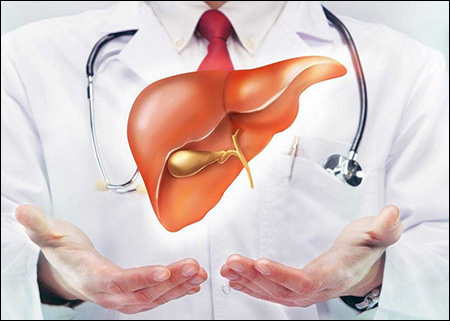Abstract
Suran vatak is a herbal formulation described in classical texts by different Acharyas. Suran or elephant yam is the edible bulb or tropical tuber crop, this plant is cultivated primarily in south Asia, or Africa or pacific island. This plant grows commonly in India and is commonly cooked in our homes as a vegetable. Suran is helpful in treating bronchitis, asthma, dysentery, diarrhoea, pain in abdomen, piles, nausea, vomiting, and many other blood related disorders. Planet Ayurveda is a herbal manufacturing company that provides great treatment with miraculous results for every health concerned patient. We provide effective herbal formulation that doesn't give any side-effects or free from filler dyes, adulterants and any other substitute. Here, the formulations are prepared under the proper guidance of Ayurvedic doctors and are 100% natural. In this article we are going to discuss the health benefits of Suran vatak.
Introduction
Suran vatak is a classical Ayurvedic formulation mentioned in Ayurvedic texts that is very beneficial in helping the patients by relieving the constipation and also helps in symptoms of piles and gives long term relief from various GIT disorders. It has been mentioned in unani and siddha medicines also. Suran vatak is a tablet that is commonly called as an ayurvedic remedy of haemorrhoids or in Malabsorption syndrome and respiratory conditions. This is commonly prepared in our kitchen in winter and provenly known as the best remedy for respiratory disorders, rheumatic swellings, or in prostate hyperplasia. This Ayurvedic formulation helps in relieving the haemorrhoids or constipation symptoms. It is known to balance the Vata and Pitta condition. But this medicine should be taken only under strict medical supervision.
Ingredients
- Surana (Amorphophallus campanulatus) - It is categorised under the shak varga by Acharya Charaka, it has katu (pungent) and kashaya (astringent) taste light to digest and hot in potency with drying and sharp or piercing in nature. It helps in reducing the kapha and vata dosha and helps in relieving piles and has a purification effect on the body and can be indicated in the worm infestation, constipation and abdominal colicy pain.
- Vriddhadaru (Argyrea speciosa) - Roots are also used in this formulation and acts as rejuvenating, appetiser, improves intestinal mobility, relieves constipation, katu (pungent), tikta (bitter) and kashaya (astringent) with light to digest and slimy in nature.
- Musli (Curculigo orchiodes) - Black musale is madhur (sweet), tikta (bitter) in taste, guru (heavy) in nature, cold (sheeta) in potency, helps in alleviates the Vata and pitta dosha, great aphrodisiac, rejuvenating agent and also strengthens the body.
- Chitraka (Plumbago zeylanica) - Lead wort is vata kapha shamak and pitta vardhak in nature, helpful in treating cough, cold, and rhinitis, it is widely used as the ama pachana and a good appetiser.
- Haritaki (Terminalia chebula) - It helps in promoting bowel movements and is a natural detoxifier of the gut and helps in improving the digestion process. Widely used as in skin ailments, haemorrhoids, inflammations and for constipation also.
- Vibhitaki (Terminalia bellerica) - This herb helps in balancing the kapha and pitta dosha and is also very beneficial in the management of Jwara, cough or helps in frequent purgation.
- Amalaki (Emblica officinalis) - It is sheeta in nature, best for the management of bleeding disorders, is rejuvenating in nature, and has a very good anti-aging effect.
- Vidanga (Embelia ribes) - This herb is famous for its krumihara, and balances the Vata and Kapha dosha also gives great results in relieving the indigestion and weak digestion.
- Nagara (Zingiber officinalis) - It is also very effective in treating constipation as it loosens the stools and helpful in eliminating the undigested food from the gut.
- Pippali (Piper longum) - This herb helps in balancing the Vata- kapha dosha and causes purgation of treated piles and haemorrhoids, it also increases the digestion capability and improves intelligence, relieves haemorrhoids.
- Bhallataka (Semecarpus anacardium) - Bhallatak is used in purified form and its therapeutic properties such as great pachana shakti, bhedan, deepneeya, kushtha ghana and udarahara etc.
- Pippali Mula (Piper longum) - Balancing the vata and kapha dosha from the body, relieves ama dosha, useful in constipation and bloating effectively.
- Talis patra (Abies webbiana) - It helps in balancing the vata and kapha dosha, treats abdominal tumour and relieves Ama dosha, appetising properties.
- Twak (Cinnamomum zeylanicum) - It is of ushna in nature, laghu in digestion, balances the vata and kapha dosha, it is very good for digestion related disorders, relieves constipation etc.
- Ela (Elettaria cardamomum) - It has a pungent and sweet taste, helps in blood related disorders and relieves burning sensation in the piles. It maintains the Vata-kapha dosha in the body.
- Maricha (Piper nigrum) - It has a scraping effect on the intestines that helps in eliminating the attached doshas and has a cleaning effect in the body.
- Guda (Jaggery) - This is used for making the Ayurvedic formulations and helps in great digestion, cleanses the stomach and helps in maintaining the vataja pittaja doshas and has a cleaning effect for the guts.
Method of Preparation
All the herbs are grinded and made in the consistency of a fine powder. This fine powder mixture is mixed with jaggery to form a fine paste. After that this paste is rolled to form pills. This is a classically defined method of preparation that is used for making this formulation.
Medicinal Properties
- Surana vatak helps to relieve constipation, relieves in pain or burning sensation of haemorrhoids, digestion improvisation, have cleaning effect on intestines, is anti-inflammatory, antispasmodic in nature, aphrodisiac property, have rejuvenating effect, improves intelligence, rejuvenating actions, or is a great appetiser.
- This formulation helps in balancing the Vata and pitta conditions. It is classically indicated in some disorders that are Arsha roga (piles), Shwas – kasa (Dyspnoea- cough), Pleeha (Enlargement of spleen), Prameha (Diabetes), Shaleepad (Filariasis), Kaphaja grahani, Kshaya roga, Bhagandar (Fistula in ano), Greying of hairs, Oedema, Improves intelligence.
- It strengthens muscles and bones and effectively treats piles and fistula-in-ano.
- This herb helps to be energetic so it also prevents weakness.
- It balances the hormones in females and gives relief from PMS symptoms.
- Surana also acts as cardiac medicine, as it helps in reducing the clots in blood vessels. And helps in regulating the blood flow in the body so reducing the high blood pressure levels.
Dosage
2 tablets twice daily with plain water after meals.
Conclusion
This is a great medication to manage various types of GIT disorders, and helps in digestion issues like piles, constipation, or other intestinal diseases or ano-ractal disorders. Its main contents are Suran and vriddhadaru that are widely used for managing the Vata and kapha dosha. Planet Ayurveda provides 100% natural products that are totally free from fillers, dyes and preservatives. When these medicines are taken under Ayurvedic physicians supervision it will not give any side effect or adverse effect.










